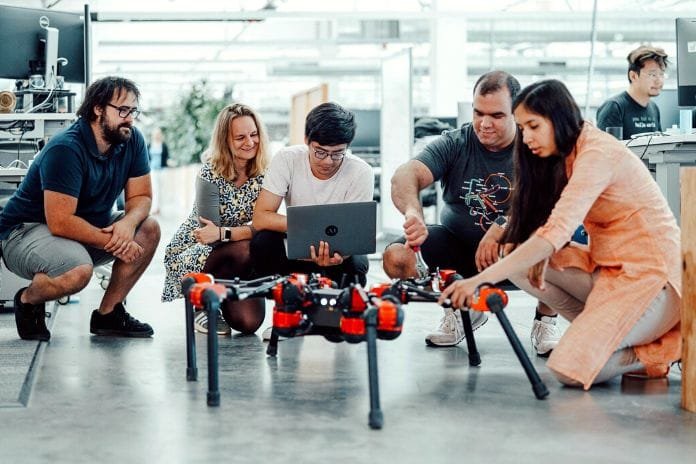
Facebook focuses on robots, teaching them to walk and learn. That’s why the search can be handy for social networks. What does a social network have to do with the robotics sector? Why is Facebook now betting on robots? What does this investment have to do with the goals of a social network like Zuckerberg? If, on the one hand, the news may seem slightly strange, on the other hand.
It is not difficult to understand the use that research in the field of robotics can have for a giant like Facebook, which among other things, has already for a long time decided to devote itself to the development of artificial intelligence. How can this type of search affect the user experience?
Facebook Focuses On Robots, Teaching Them To Walk. For What Reason?
Advancing artificial intelligence, teaching robots to learn would be the main objective of Facebook, following the title of the article published on the company’s blog. As the authors explain, developments in the field of robotics can create essential opportunities for artificial intelligence, adding that “teaching machines to learn by themselves in the physical world will help us develop more efficient and flexible AI systems in other scenarios.
We know that robots can be programmed to perform specific tasks, such as walking, in the case of the research in question. Thus, commands are entered that will allow the robots to perform the necessary movements to move without difficulty. From the robot “Daisy,” however, the researchers of the Facebook team expect more: they want to teach him to walk without an “instruction manual, “without help, as a human being would do, that is, alone.
The Progress
Learning to walk in the physical world will undoubtedly be different from learning to navigate a flood of data like that of Facebook; however, the idea of a system that once provided with ground rules and objectives “learns itself, in a short space of time” could apply to both cases.
For these reasons, Facebook focuses on robots, and even if what it is trying to propose to “Daisy” is not new in the sector, the goal is still ambitious: the intention is to reduce the amount of data usually required so that an artificial intelligence system can carry out a specific task.
Knowing that Facebook uses AI for the automatic translation of words or the recognition of objects or people in photos, this type of search may certainly also contribute to making the features present more efficient in the long run on the social network. In addition to the two examples mentioned, developments in this area could help improve how we identify content that violates Facebook’s terms of use (such as terrorist propaganda or nudity, for example).
Facebook Also Tests The Robot’s Curiosity
Another interesting fact concerns the concept of “curiosity” and how the Facebook team decided to “apply” it to a robotic arm to perform various tasks. In the case of human beings, curiosity drives them to experience new situations and eventually learn something new. By “curiosity, “however, in this case, we simply mean that the “AI system will be rewarded for exploring the surrounding environment or for trying new things.
How to decide to walk faster or slower), thus reducing the degree of uncertainty of the actions to be carried out, for example by checking the same object twice or moving the camera further to have a broader perspective of the context and avoid obstacles. This could be traced back to Zuckerberg’s significant investment in computer vision technology.
The company recently introduced the “Portal” device, which, thanks to an intelligent camera, can significantly personalize the classic video calls that force users to stand still and position well in front of the screen. Facebook Portal recognizes people’s faces and “follows” them as they walk, adapting the camera’s zoom as users move freely within the room, allowing the interlocutor to see everything happening in the surrounding environment.
It’s easy to see how important the ability to understand and explore context is for optimizing devices like Portal or for any application that requires information about the environment to provide feedback or function properly.
Know The Environment By Touch
Furthermore, the group of researchers has developed a new machine learning technique, “self-supervised learning,” which allows learning through touch and tactile exploration of the context. The robotic hands used have sensors on the fingertips.
The idea is to teach the robots to understand how to do things by themselves: for example, pick up an object, repeat the task several times, and use the data from tactile sensors (or, in any case, from one’s exploration of the surrounding environment) to increasingly improve the precision of one’s performance.
Therefore, if Facebook focuses on robots, the investment is undoubtedly well-studied. As can be read on the company blog, our robotics work aims not only to create better-performing robots, but also to go beyond the limits of AI in the years and decades to come. If we want to get closer to developing machines that can think, plan and reason as people do, then we need to build AI systems that can learn on their own, in very different scenarios, beyond the digital world .
